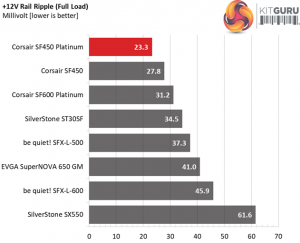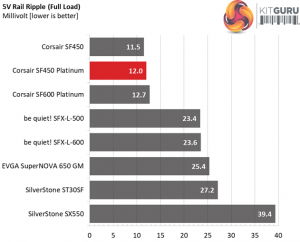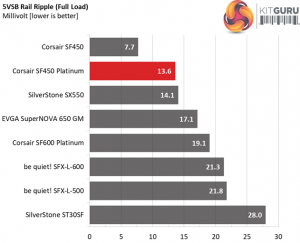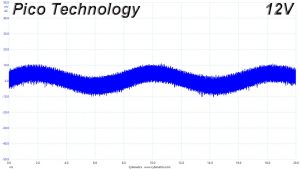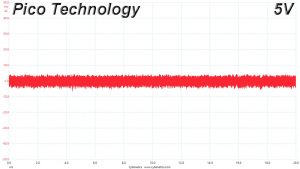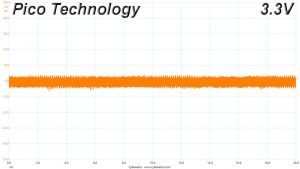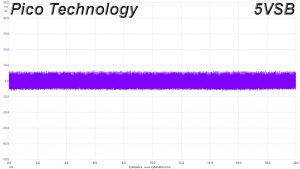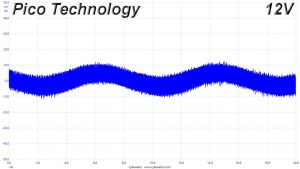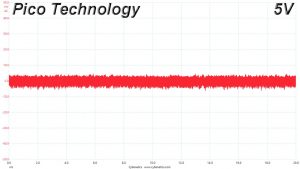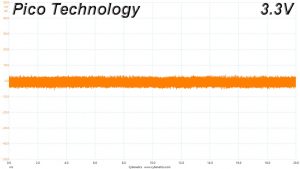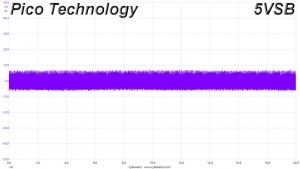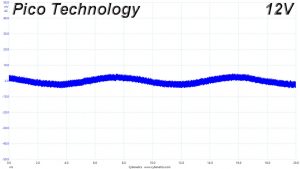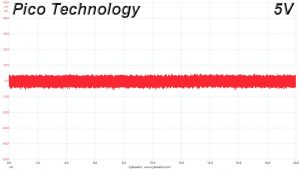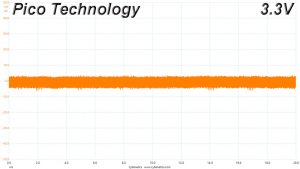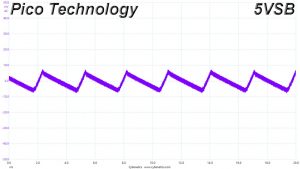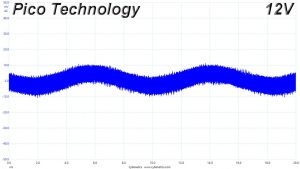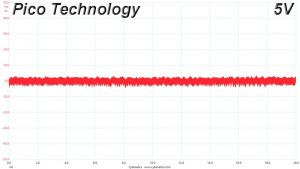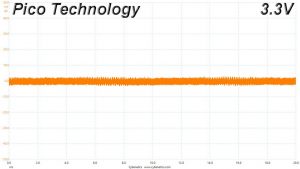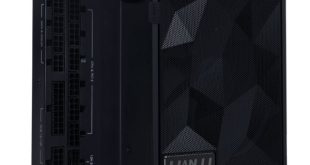To learn how we measure ripple, please click here.
The following table includes the ripple levels we measured on the SF450’s rails. The limits, according to the ATX specification, are 120mV (+12V) and 50mV (5V, 3.3V, and 5VSB).
| Test | 12V | 5V | 3.3V | 5VSB | Pass/Fail |
| 10% Load | 5.5 mV | 6.8 mV | 4.5 mV | 7.6 mV | Pass |
| 20% Load | 8.5 mV | 7.2 mV | 5.3 mV | 9.2 mV | Pass |
| 30% Load | 11.0 mV | 7.6 mV | 5.6 mV | 9.0 mV | Pass |
| 40% Load | 12.7 mV | 7.9 mV | 6.2 mV | 8.6 mV | Pass |
| 50% Load | 15.2 mV | 8.7 mV | 6.8 mV | 8.7 mV | Pass |
| 60% Load | 26.5 mV | 9.4 mV | 8.7 mV | 11.3 mV | Pass |
| 70% Load | 18.9 mV | 10.2 mV | 10.2 mV | 10.2 mV | Pass |
| 80% Load | 19.9 mV | 11.0 mV | 11.7 mV | 11.2 mV | Pass |
| 90% Load | 21.7 mV | 11.3 mV | 11.1 mV | 12.5 mV | Pass |
| 100% Load | 23.3 mV | 12.0 mV | 11.1 mV | 13.6 mV | Pass |
| 110% Load | 25.8 mV | 12.1 mV | 10.9 mV | 14.7 mV | Pass |
| Crossload 1 | 9.9 mV | 11.6 mV | 11.2 mV | 15.6 mV | Pass |
| Crossload 2 | 23.6 mV | 8.1 mV | 6.8 mV | 15.0 mV | Pass |
The ripple suppression is very good on all rails. You shouldn't expect to find the below 10mV readings that the high-end ATX units achieve, since the available space in the secondary side is limited in SFX units and Corsair didn't use in-cable caps. In any case though, 23.3mV of ripple at +12V under full load at 47°C is top-notch performance.
Ripple Oscilloscope Screenshots
The following oscilloscope screenshots illustrate the AC ripple and noise registered on the main rails (+12V, 5V, 3.3V and 5VSB). The bigger the fluctuations on the screen, the bigger the ripple/noise. We set 0.01 V/Div (each vertical division/box equals 0.01V) as the standard for all measurements.
 KitGuru KitGuru.net – Tech News | Hardware News | Hardware Reviews | IOS | Mobile | Gaming | Graphics Cards
KitGuru KitGuru.net – Tech News | Hardware News | Hardware Reviews | IOS | Mobile | Gaming | Graphics Cards


